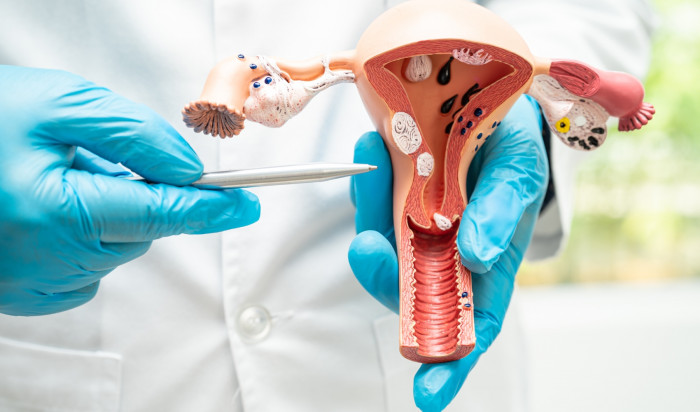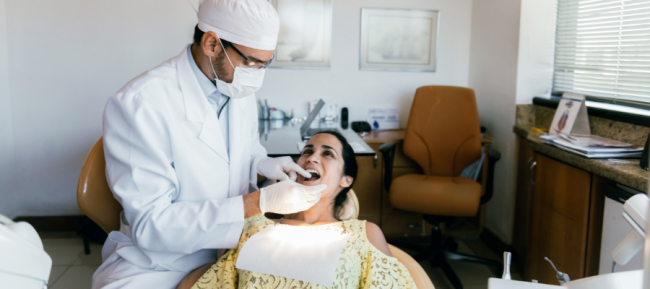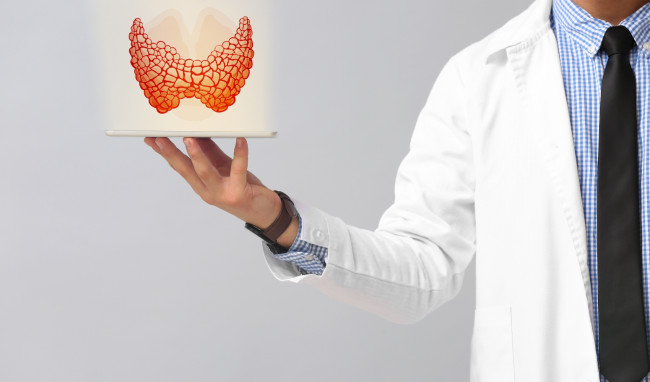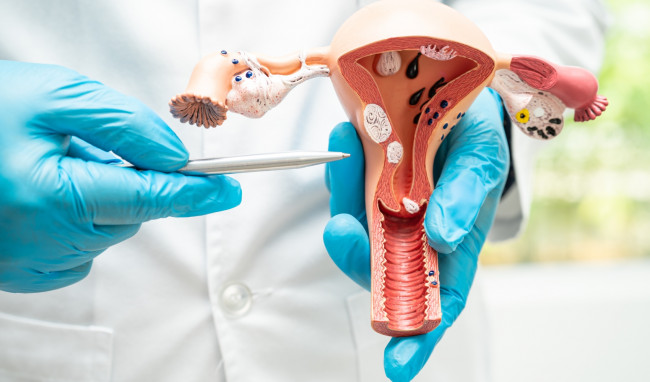
Introduction
Fibroids, often referred to as calcified uterine leiomyoma, are noncancerous growths that originate in the uterus. Although fibroids are common in women who are fertile, the calcification of these growths can cause a number of problems, including problems with fertility. We shall examine the consequences of calcified uterine leiomyoma on fertility as well as treatment options in this post.
Understanding Calcified Uterine Leiomyoma
Benign tumours called fibroids grow in the uterine muscle wall. Their size might vary, from tiny seedlings to massive masses that cause the uterus to sag. Subserosal (outside wall), intramural (inside the muscular wall), and submucosal (beneath the inner lining of the uterus) are the three locations of fibroids within the uterus.
When calcium salts accumulate and harden the fibroid tissues, this process is known as calcification. Degenerative alterations inside the tumours or long-standing fibroids are common causes of calcified uterine leiomyoma. Although calcification usually means that the fibroids are not developing aggressively, it might cause problems including infertility.
Impact on Fertility
There are several ways in which a calcified uterine leiomyoma might negatively impact fertility.
Distortion of the Uterine Cavity:
Uterine cavity distortion may occur due to submucosal fibroids, which develop beneath the uterine lining. This distortion may lessen the likelihood of a successful pregnancy by interfering with the implantation of a fertilised egg.
Altered Uterine Contractility:
Uterine contractility may be impacted by fibroids, especially those situated in the uterine muscle wall. Reduced uterine tone or irregular contractions might hinder embryo implantation or raise the chance of miscarriage.
Impaired Blood Flow:
Blood flow to the uterus or the surrounding reproductive organs may be hampered by calcified fibroids. An inadequate blood supply can impede the implantation and growth of embryos, resulting in infertility or problems during pregnancy.
Hormonal Imbalance:
Because fibroids are hormone-sensitive tumours, progesterone and oestrogen can affect them. These hormone imbalances, which are frequently linked to the formation of fibroid tumours, might interfere with ovulation and the menstrual cycle, which can impact fertility.
Treatment Solutions
An all-encompassing strategy customised to each patient's requirements is needed to manage calcified uterine leiomyoma and its effect on fertility. Possible course of treatment options include:
Medications:
Hormonal therapies, such as selective oestrogen receptor modulators (SERMs) or gonadotropin-releasing hormone agonists (GnRHas), can reduce fibroids and their associated symptoms. These drugs can decrease the size of fibroid tumours, which may briefly increase fertility, although the benefits are often transient.
Surgery:
The aim of surgical techniques such as hysteroscopic resection and myomectomy is to remove fibroids without affecting fertility. Surgically removing fibroids from the abdomen is known as a myomectomy. This can be done using minimally invasive methods like laparoscopy or robotically assisted surgery. A technique called hysteroscopic resection is used to remove submucosal fibroids that extend into the uterus through the cervix and vagina.
Uterine Artery Embolization (UAE):
Through a minimally invasive surgery called UAE, fibroids' blood supply is cut off, eventually causing the tumours to shrink. Although UAE is not intended to maintain fertility, women who want to forego surgery and retain the possibility of becoming pregnant in the future may want to give it some thought.
In vitro Fertilization (IVF):
IVF could be a good option for women with significant fibroids or infertility problems brought on by calcified uterine leiomyoma. With IVF, eggs are fertilised outside of the body, and the resultant embryos are then placed into the uterus. IVF can increase the likelihood of conception and pregnancy by avoiding any barriers caused by fibroids inside the uterus cavity.
Fertility Preservation:
Alternative methods like cryopreservation of ovaries or embryos may be taken into consideration when maintaining fertility is the main priority. Women undergoing fibroid therapy can preserve their ability to procreate by preserving eggs or embryos for later use.
Lifestyle Modifications:
Healthy lifestyle choices can enhance medical interventions and promote fertility. Hormone imbalances can be managed and general reproductive health can be enhanced by eating a balanced diet full of fruits, vegetables, and whole grains. Frequent exercise may enhance fertility by lowering stress and enhancing blood flow to the reproductive organs.
Alternative Therapies:
In order to control fibroid-related symptoms and improve fertility, some women may look into complementary or alternative therapy. Some people experience relief from certain types of therapy, including herbal supplements, acupuncture, and mind-body practices like yoga and meditation. Although there is little data on these methods' effectiveness, they could help with symptom alleviation and promote general wellbeing during the reproductive process.
Psychological Support:
Managing problems with conception, particularly those with calcified uterine leiomyoma can be emotionally taxing. Emotional support and coping mechanisms can be obtained by seeking assistance from loved ones, support groups, or mental health specialists. Resolving depression, anxiety, and stress can improve life quality in general and reproductive results in particular.
Regular Monitoring:
When attempting to conceive, women with calcified uterine leiomyoma should have frequent monitoring to evaluate the progress of their fibroid and their fertility. Hormonal assessments, menstrual cycle tracking, and pelvic ultrasonography scans are some examples of monitoring procedures. Working closely with reproductive specialists might make it easier to spot changes or issues early on and modify treatment strategies appropriately.
Individualized Approach:
Every woman had a different experience with reproductive issues and calcified uterine leiomyoma. As a result, treating each patient as an individual requires careful consideration. When creating a treatment plan, medical professionals should take into account variables including age, past reproductive history, the location and size of the fibroids, general health, and individual preferences. Healthcare professionals may accommodate each patient's unique requirements and goals by customising procedures that will maximise results and assist successful reproduction.
Conclusion
For women hoping to become pregnant, calcified uterine leiomyoma can pose serious challenges, but it is not an insurmountable barrier. Women suffering from calcified uterine leiomyoma can still aim to have children by learning about the effects of fibroids on fertility and investigating the many treatment options available. There are many options to consider, ranging from lifestyle changes, alternative treatments, and psychological support to medical procedures including medication, surgery, and assisted reproductive technologies. With a comprehensive approach to fertility care and close collaboration with medical professionals, women can overcome the obstacles presented by calcified uterine leiomyoma and still have hope for a safe pregnancy and child.
















